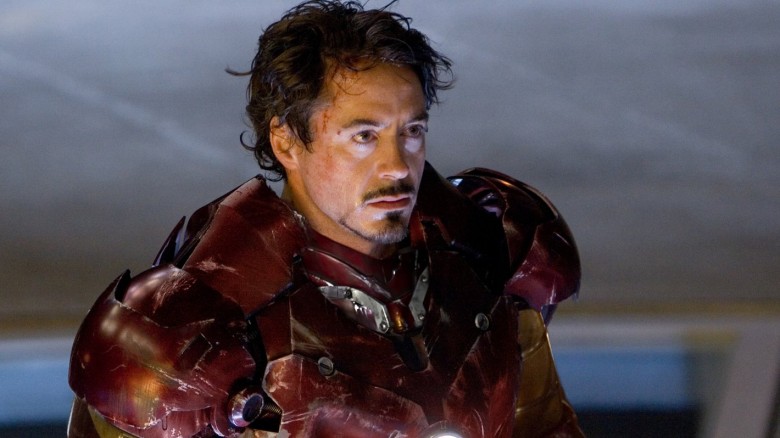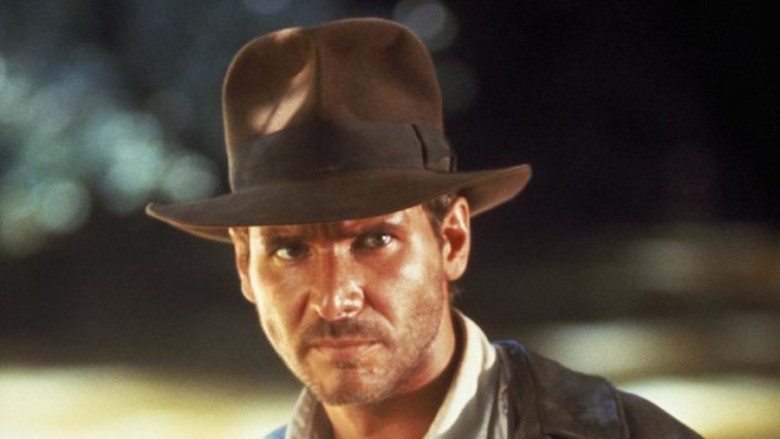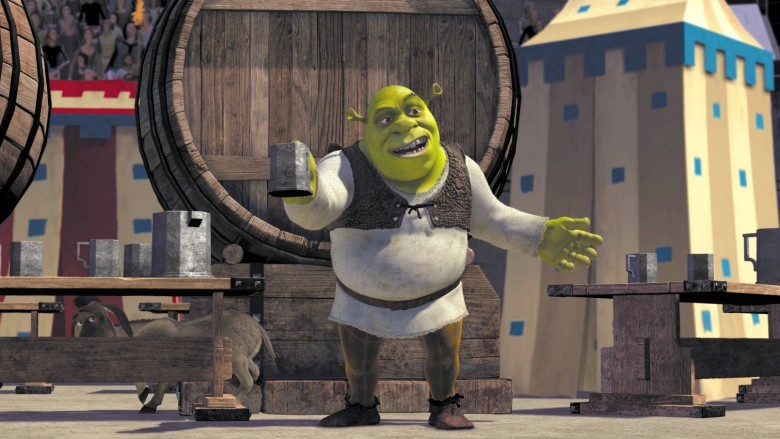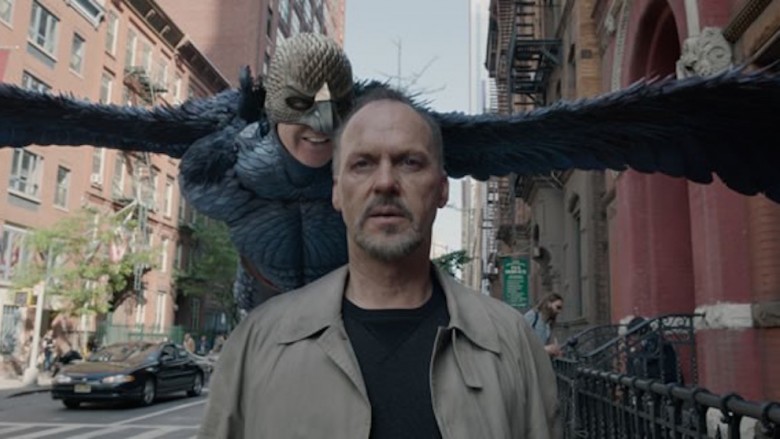Last-Second Changes That Saved These Great Movies From Being Terrible
When you watch a major motion picture, you'd never imagine that a huge production would make any last-minute decisions. Or if they did, it would surely be over something small and never anything that could drastically change the movie forever. Really, the opposite is true. Some of your favorite films were within in an inch of coming out terrible, if it wasn't for a last-second change that made these movies into what they are today.
Toy Story (1995)
Toy Story put Pixar on the map, but before it became a classic of computer animation, it was almost a mean-spirited cartoon about a jerky cowboy doll that everyone hated. As Toy Story was being made, notes came in every step of the way. Jeffrey Katzenberg wanted this cartoon in a new medium to be as edgy as possible. Eager to please, the Pixar folks pushed the meanness to the max and hoped it was going in the right direction.
When they screened the first part of the film, no one could believe the results. It was just awful. Even director John Lasseter was confused. He'd directed it and gone in the edgy direction Katzenberg wanted, and they'd ended up with a story about mean, hateful toys. There was no fun and nothing lovable. In this version, Woody intentionally tosses Buzz out the window and doesn't care that he sent the spaceman to his death. Then, the toys revolt against him, and throw him out the window to his own doom. "You've Got a Friend in Me" wouldn't fit anywhere in this version of the film.
Disney execs wanted Lasseter to fire a bunch of people and start animating under Disney supervision. He refused and asked for two weeks to make it work. Disney allowed it and after working all hours and disregarding all the previous notes, the Pixar team was able to present enough of the revised Toy Story to keep their jobs and keep going with the film. In the end, the movie was completely retooled and became the wonderful movie we all love today.
Clerks (1994)
Kevin Smith made a big splash with his independent film debut, Clerks. A black and white comedy about two aimless men working at a convenience store, Smith set up characters he'd return to for years to come. Part of what makes Clerks great was its casual, comedic dialogue and slice-of-life tone. That all could have been ruined by the original ending.
Originally, Dante, one of the Quick Stop workers, gets shot in a robbery and the film ends as he dies on the convenience store floor. Brian O'Halloran, the actor who played Dante said, "I hated that ending. I just thought it was too quick of a twist." Smith wasn't married to that finale either. He shot it mostly because he wasn't sure what to do to end the movie. Luckily, he agreed with O'Halloran and went with the non-tragic ending.
Zootopia (2016)
Zootopia in its original form hardly resembles the film we know now. First of all, Judy Hopps wasn't the main character. Second, Nick was the story's cynical protagonist. Last, all the predators had to wear shock collars around their necks for the rest of their lives. If that sounds unpleasant, don't worry, the Zootopia filmmakers agreed.
Nick as the lead was difficult since he was so sarcastic and disappointed in the world. The original story had him as a con man who was trying to make something of himself but who was always put down for being a predator and who was later framed for a crime he didn't commit. Then there was the whole collar thing. In an original scene, they show Nick as a kid at a Taming Party. Once predators got to a certain age, they'd get bar mitzvahs of sorts, then have to put on their taming collars for the first time. Watching the happy little bear realize he'll never be free again is heartbreaking. Though Pixar doesn't usually shy away from heartbreak, the filmmakers eventually felt the overall taming concept and negative lead character made the movie too dark and unappealing. So, they revamped the entire script, made Judy the main character and threw those collars in the idea garbage.
Iron Man (2008)
It's hard to remember a time without Marvel movies, but oh-so-long-ago in 2008, Iron Man was the first of its kind. Sure, we'd had successful Batman movies and Spider-Man had been a hit, but superhero movies weren't a sure bet. Plus, Marvel was a new studio trying to make a name for itself, so it couldn't take many risks. This is why no one wanted Robert Downey Jr.
Director Jon Favreau knew he wanted Robert Downey Jr. from the start, but the studio refused. Multiple times it shut down the idea of Downey in the role, mostly scared that his past struggles with drug abuse and arrest would come back to haunt the production. But Favreau stood his ground. He said, "Everybody knew he was talented. ... Certainly by studying the Iron Man role and developing that script I realized that the character seemed to line up with Robert in all the good and bad ways. And the story of Iron Man was really the story of Robert's career." Eventually, the studio relented, and now it's impossible to picture anyone else in the role.
American Beauty (1999)
Before winning five Academy Awards, American Beauty nearly had a different ending. In the first draft of the script, the story is bookended by a media frenzy of a trial. Lester's daughter Jane and her boyfriend, Ricky, are accused of murdering Lester. The trial touts the tape they made where Jane says she'd like Ricky to kill her dad as the ultimate proof. After Lester's death, the film ends with Ricky and Jane getting wrongfully convicted and sent to jail.
Though they filmed all the trial segments, screenwriter Alan Ball felt the ending was too depressing. That might sound strange for a film that already ends with the main character shot in the chest, but the innocent teens taking the blame was a step too far to the cynical side. Plus, it took away from Lester's main story, so the wraparound was cut and Ricky and Jane got to go free.
Terminator 2 (1991)
When you think of Terminator 2, you normally don't think "I wish this ended on a playground with Sarah Connor tying her cute little grandchild's shoes." Well, that's original how director James Cameron wanted it to end.
In a deleted scene, we can see the fully filmed original finale. It cuts to 30 years in the future, where Sarah Connor recounts her days since the Terminator came into her life. Judgment Day never happened and the Earth is full of happy children, playing on a playground. John Connor is a senator, and Sarah is a lady with terrible aging makeup who just got drunk all the time after saving the world. The film ends with Connor saying these very back-to-school-special words: "The luxury of hope was given to me by the Terminator. Because if a machine can learn the value of human life, maybe we can, too."
Thankfully, Cameron realized that this ending was completely out of tone with the rest of the film and would have ruined any chances for sequels. Seriously, this ending may not have ruined Terminator 2, but it would have left you with a sickly, sweet taste in your mouth that might take away a bit of its classic status.
Raiders of the Lost Ark (1981)
Pretty much everybody agrees that Indiana Jones in Raiders of the Lost Ark is great. There's a reason why that character has stayed popular through the decades, and a lot of it had to do with Harrison Ford's winning performance. But he wasn't the first choice.
George Lucas co-wrote and produced the film with Steven Spielberg, and when Ford's name came up for the lead, Lucas shrugged it off. "Oh, Steven. He's been in two of my movies. I don't want him to be my Bobby De Niro." (Why not?!) Though a lot of people auditioned, Tom Selleck quickly became a front-runner. Spielberg and Lucas offered him the role, but contractually, Selleck had to wait and see if his TV pilot would get picked up. That pilot was Magnum PI, which went to series and didn't allow Selleck the chance to be Indiana Jones. Now, Selleck as Jones may not have been terrible per se, it's just that Ford is so perfect, it's hard to think that anyone could compete with his performance.
Shrek (2001)
The character of Shrek went through a lot of changes before we ended up with the heart of gold Scottish ogre. Originally, Chris Farley was hired to voice the role, though he wasn't able to complete his work before his unfortunate death. So Mike Myers came on as a replacement. He recorded most of his lines in a Canadian accent. Basically, Myers' own voice with a bit of exaggeration. But Myers felt it wasn't working right.
Inspired by the upper-class English accent John Lithgow used for Lord Farquaad, Myers felt Shrek should have a more working-class sound. He ended up settling on Scottish and insisted on redoing all the lines with his new idea. Sadly for Jeffrey Katzenberg, they had already animated a third of film; though a new voice wouldn't mean reanimating everything, it would require a lot of changes. In fact, Myers' choice to go Scottish cost the film $4 million. In the end, Shrek was a huge hit that spawned a major franchise, so Katzenberg probably wasn't too sad about it.
Birdman (2014)
Birdman brought Michael Keaton back to the A-list and its visionary direction by Alejandro Iñárritu gave this tale of an actor going mad an exciting new depth. But it was almost ruined by an unnecessary cameo.
Iñárritu, who also co-wrote the film, admitted that the film originally ended with Johnny Depp. After Riggan Thomson (Michael Keaton) shot himself on stage, there would be a scene with Riggan being interviewed about his great performance by Charlie Rose or James Lipton. The camera would then pan away and go through the hallways and rooms of the theater until it reached Johnny Depp sitting backstage. He'd be putting on his Riggan Thomson wig while a Pirates of the Caribbean poster in the background asked him, "What the f**k are we doing here, mate?" Iñárritu said, "it was going to be the satire of the endless loop of that."
Fortunately, the director came to a realization. "In the middle of shooting, I knew it was a piece of s**t." The Johnny Depp cameo was canceled, and the confusingly cyclical ending was subbed out for an equally confusing but more satisfying climax.




